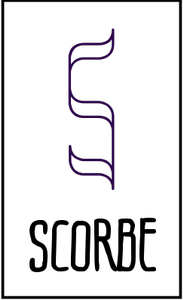It is hard to think of an area of human endeavor that has inspired more creativity and more ideas than the study of science.
Science deals with explanations and consequences of natural events and it is the driving force behind much of what we observe and think about on a daily basis. In fact, many people consider all forms of scientific inquiry into the world as having a subjective nature.
Science has been important in the formulation of laws that govern behavior in the natural world. For instance, most laws of physics are determined by observations made over time and by observation alone. Scientists have also used sophisticated equipment and techniques in the quest to understand and describe various phenomena in the natural world, including the behavior of complex or abstract objects. Cargo cult science is an example of a pseudoscientific belief in which a hypothetical explanation is offered for an observed phenomenon, and later events of that same phenomenon are deemed to be the product of this theory.
Some common characteristics of cargo cult science include an overall focus on data analysis via virtual data room. Don’t hesitate to check the virtual data room reviews at the software review blog. Although scientists are often accused of being subjective and impatient, the process of obtaining solid data and confirmation of previously unknown facts is crucial to the progression of scientific endeavors. Without solid empirical data to work from, there can be no progress made. Without the backing of a large number of independent studies and research projects, even the most promising theories and discoveries will be considering theory-based, rather than real science.
Without rigorous testing, allegations of science being influenced by personal interest become far-fetched.
Despite the suspicion that many pseudoscientists rely on weak methods and fallacious arguments, there are a number of methods employed in science that have long been proven successful. Examples of this include deductive and inductive physics, DNA science, and particle physics. The former is often used in the study of living systems such as plants and animals; the latter refers to the discipline of physics that describes the behavior of subatomic particles. Although it was once thought that the speed of light was a kind of “quantum” field, quantum physics ultimately showed that the speed of light was simply a natural occurrence caused by a massive number of interacting atomic particles.
Another example of a pseudo-sciencyal method popular amongst those who think that science is pseudo-scientific in the building of the model from observations of physical phenomena. While many real science projects use deterministic equations as a means of describing a physical event without taking into consideration any outside influence, this is not the case when it comes to the construction of the model. The main reason behind this is because a deterministic equation can be written down by a human being, whereas a model cannot – it is deterministic only in the mathematical language of the model itself. However, many psychologists, political pundits, and other members of the scientific community have made much fuss about the build of the model from observations of the building itself. This is often couched in terms of “mysterious power” or “psychic intervention”.
The term “Building Science” was coined in 1984 by archaeologist Kenneth C. Davis, who was concerned that the prevailing model of science was becoming too dependent on the study of ancient buildings. Thus, he felt that contemporary building science needed to have a broader range of samples. In his view, science should be more like painting, whereby every component part is as important as any other. Thus, he proposed that science should investigate how the individual constituent parts of buildings interact, how they affect each other, and how these interactions take place in time and space. He thus distinguished between science and architecture, focusing mainly on architectural aspects of building science.
This later evolved into the Foresight System, which was marketed by Davis as the Performance Objectives Framework.
The Performance Objective framework is largely based on Davis’s belief that science should be able to explain physical phenomena in terms of their effects on the environment. More importantly, he believed that buildings behave according to functional requirements, and not just because of their design or construction. As a result, he used the concept of form following function to explain how interior and exterior designations affect one another. Thus, Performance Objective frameworks provided building science with a visual language of building function that could describe the process of getting buildings designed and constructed.
Thus, from the Foresight System to the whole system model and now to the HCTP, science has made significant contributions to the field of building science. However, the relevance of science-based theory in the construction of a building cannot be overlooked. A good theory cannot simply describe the construction process as it relates to the different building components; it also has to explain how these components interact and how these interactions affect one another. For instance, a good theory for the study of barn beams must explain how the beam’s load-bearing capacity is determined, what forces caused it to change shape during its long journey in nature, what shape it took after being bent, and how it would behave when subjected to the changing stresses of usage. Similarly, a good theory for the study of building performance must discuss the effect of temperature on the different building materials and their ability to withstand heat, the relationship between external temperatures and varying structural loads, and the importance of damp proofing and weather stripping as important tools in modern building maintenance.
